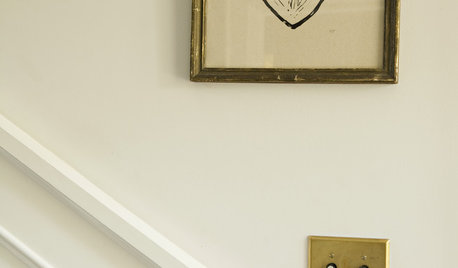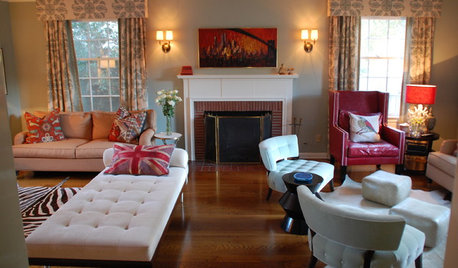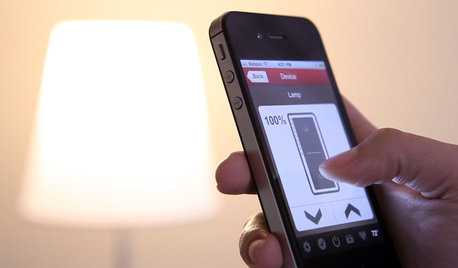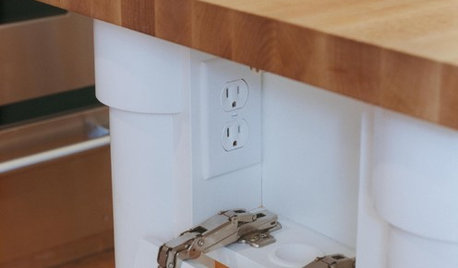Moving Light Switches
mjones84
13 years ago
Related Stories

DECORATING GUIDESHomeowners Are Flipping for Push-Button Light Switches
Button-style switches are hot off the presses again, making news in new homes and antique remodels
Full Story
LIGHTINGWhat to Know About Switching to LED Lightbulbs
If you’ve been thinking about changing over to LEDs but aren't sure how to do it and which to buy, this story is for you
Full Story
LIFE7 Things to Do Before You Move Into a New House
Get life in a new house off to a great start with fresh paint and switch plates, new locks, a deep cleaning — and something on those windows
Full Story
ENTERTAININGEntertaining Arrangements: Move the Party Indoors
Switch around your furniture into multiple seating areas for fun and flexible party spaces
Full Story
HOME TECHSwitch On the Phone-Controlled Home
Lock your front door from afar, let your thermostat set itself and more when you use your phone as a control device
Full Story
GREAT HOME PROJECTSHow to Switch to a Tankless Water Heater
New project for a new year: Swap your conventional heater for an energy-saving model — and don’t be fooled by misinformation
Full Story
KITCHEN DESIGNHow to Hide Those Plugs and Switches
5 ways to camouflage your outlets — or just make them disappear
Full Story
GARDENING GUIDESHow to Switch to an Organic Landscape Plan
Ditch the chemicals for a naturally beautiful lawn and garden, using living fertilizers and other nontoxic treatments
Full Story
DECORATING GUIDESSwitching Up a Colonial Home to Suit a Modern Family
Floor plan labels are thrown out the window as a designer helps a family shape rooms to fit the way they live
Full Story
ENTRYWAYSSingle Design Moves That Can Transform an Entry
Take your foyer from merely fine to fabulous with one brilliant touch
Full Story







brickeyee
mjones84Original Author
Related Professionals
Four Corners General Contractors · Belleville General Contractors · Easley General Contractors · Fitchburg General Contractors · Fremont General Contractors · Hillsborough General Contractors · Mount Holly General Contractors · Pocatello General Contractors · Red Wing General Contractors · River Forest General Contractors · Rolling Hills Estates General Contractors · Elmhurst Solar Energy Systems · Champlin Home Automation & Home Media · Evanston Home Automation & Home Media · Southlake Home Automation & Home Mediamjones84Original Author
joed
brickeyee
worthy
DavidR
ElectraToo
dennisgli
Ron Natalie